The verdict: The Chevrolet Corvette is already a capable, beautiful and highly entertaining sports car, and the Z06 treatment makes it even more formidable.
Versus the competition: The Corvette Z06 is easily a match for sports cars twice its cost. In the speed, looks and ability departments, it’s top of the pack — but its interior appointments aren’t up to luxury-brand snuff.
The Chevrolet Corvette is entering its fifth year of production as the C7, the seventh generation of the top GM sports car, and it's enjoyed a highly successful run thus far. Gorgeous and astonishingly fast, with handling that's free from excuses, a base Corvette is a sports car bargain, a machine that performs well above its station in life. So what happens when you pump a Vette up to more extreme levels? You get the Z06.
Featuring a supercharged V-8 engine, an adjustable suspension, tunable exhaust and all kinds of go-fast aero bits, the Z06 is the top performance model in the Corvette range — until the rumored ZR1 appears for a limited engagement and an all-new, mid-engine Corvette debuts as the C8 sometime soon.
I spent a week in a new 2018 Corvette Z06 coupe during an unseasonably warm autumn spell to see just how different it is from lesser versions.
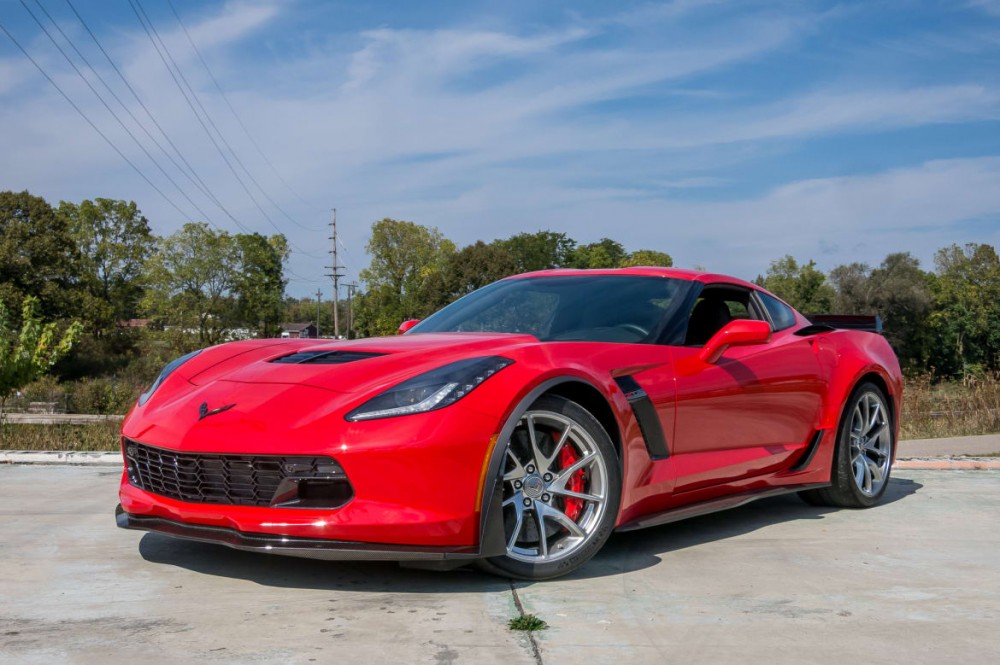
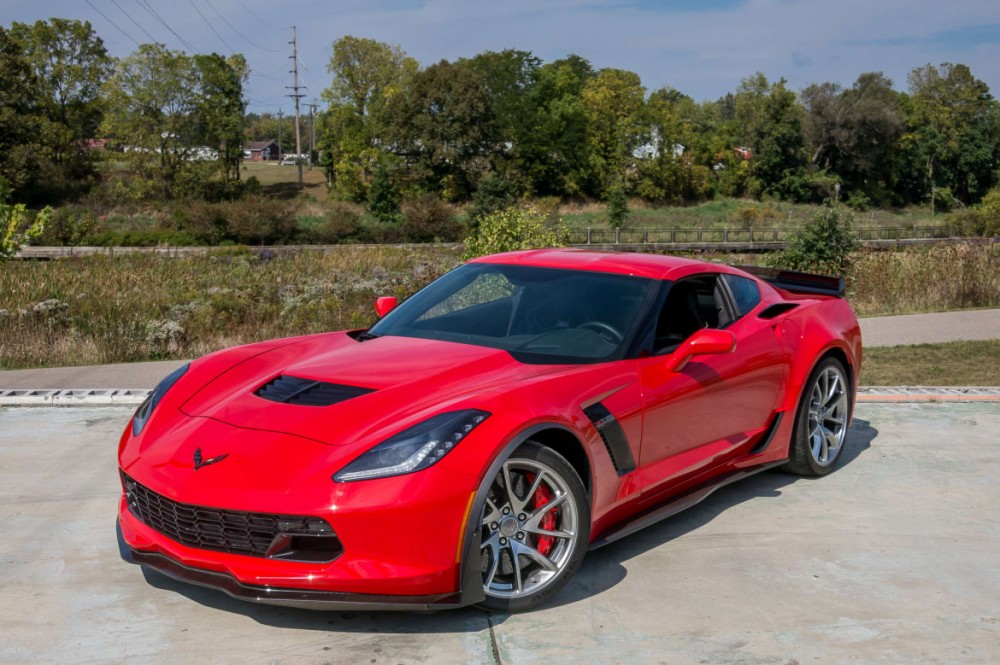
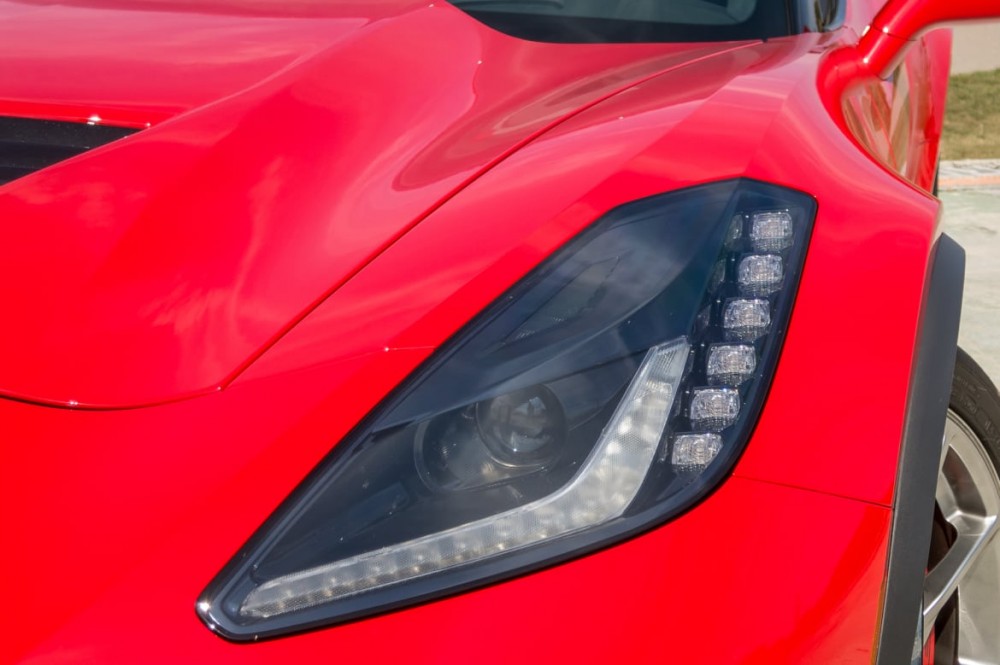
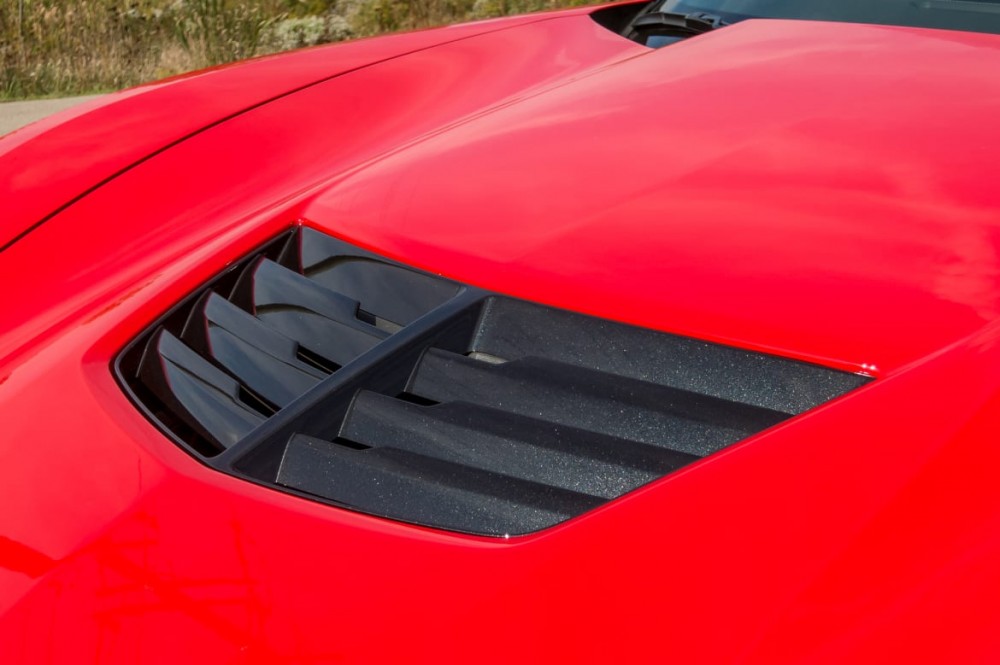
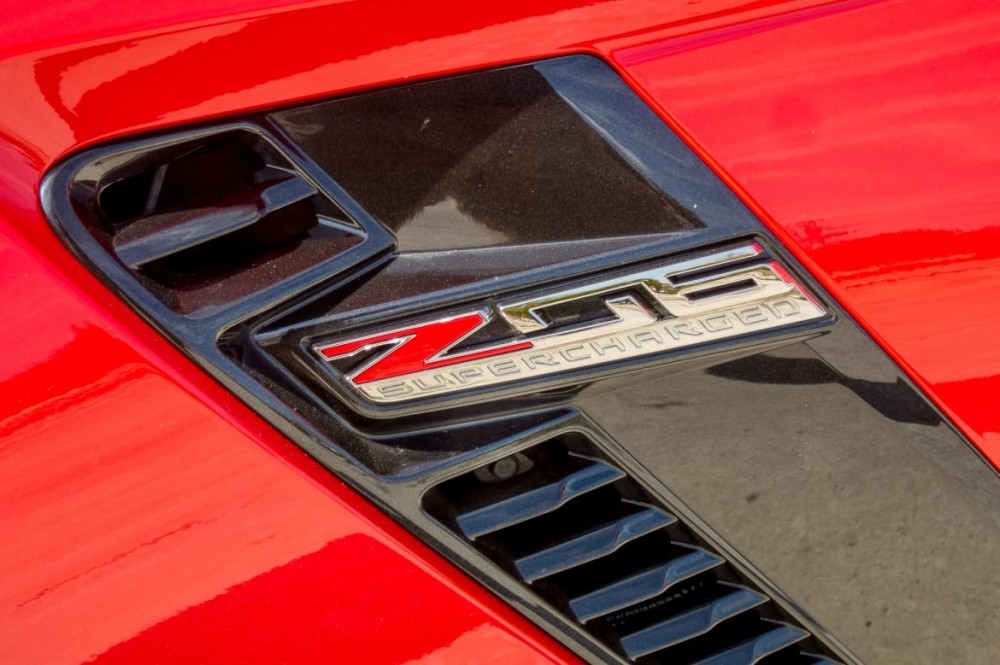
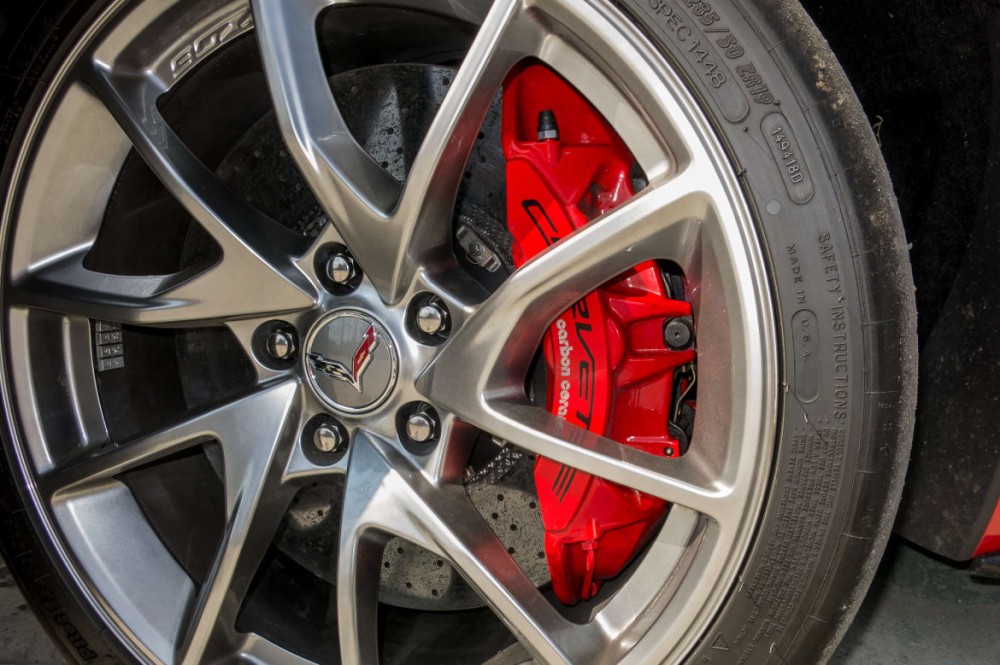

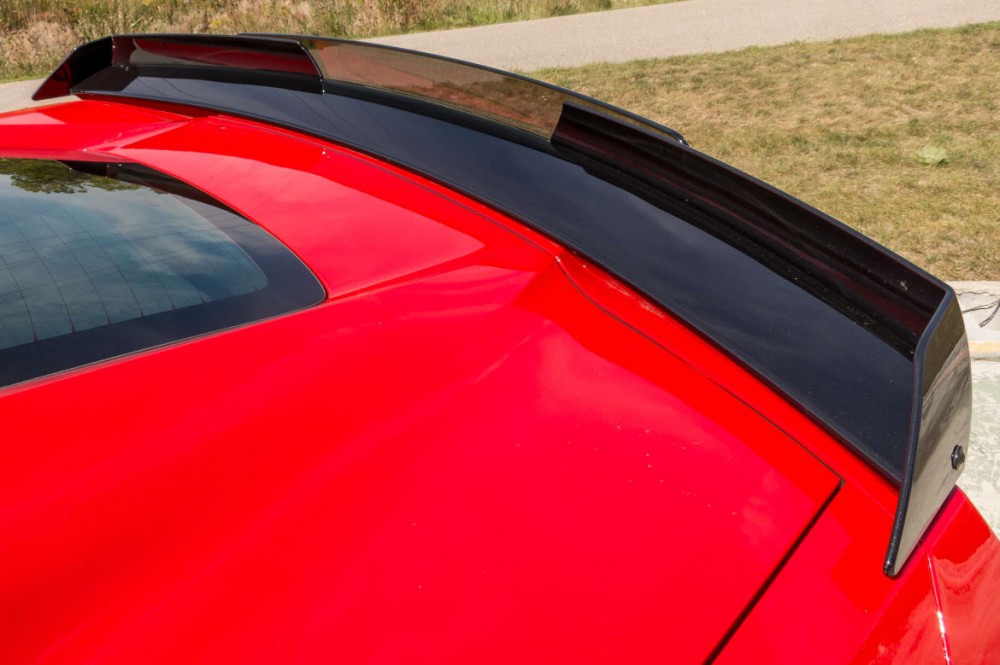
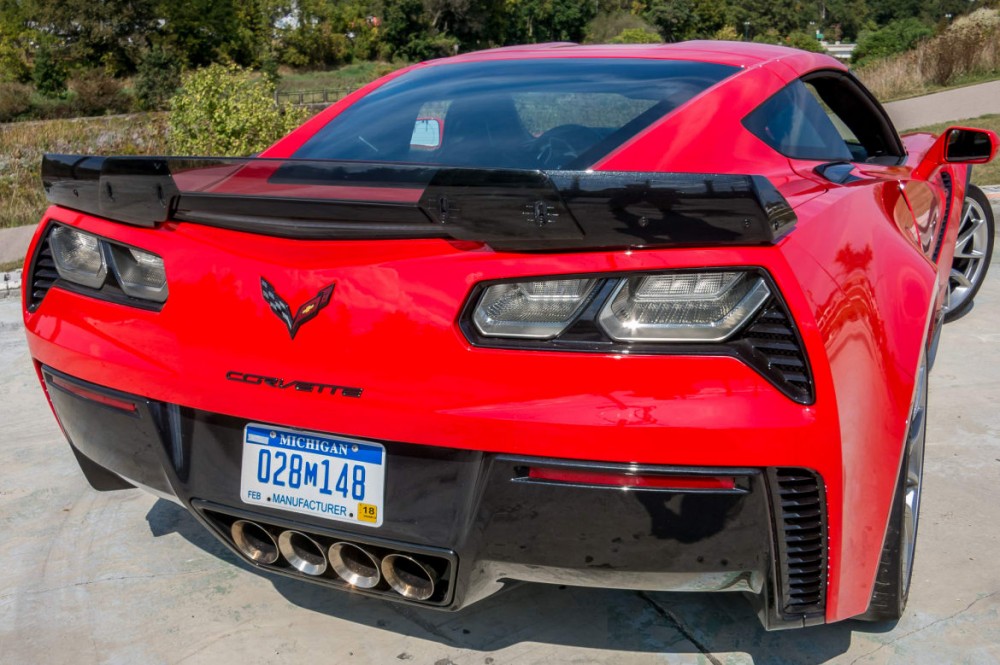
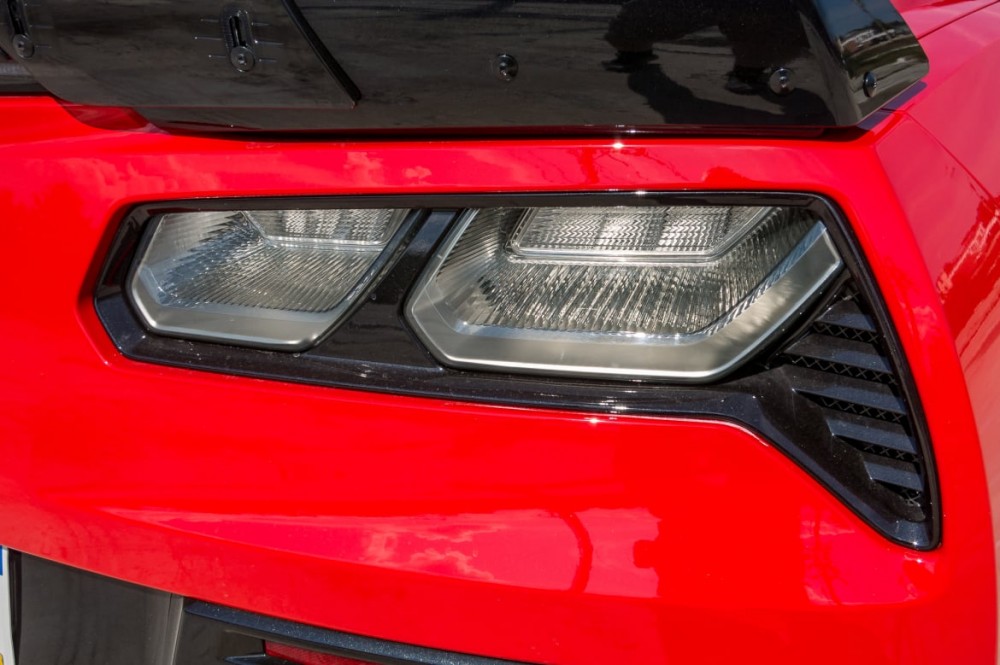
Still a Looker — on the Outside
Until now, I'd only ever driven convertible versions of this generation of the Corvette, and while the soft-top version is attractive in its own way, the coupe really is better-looking. Having no roof accentuates the car's massive rear haunches, while keeping the hatchback roofline in place makes it look low, sleek and much more exotic than anything Detroit has produced in some time. The fact that this almost Italianate styling is available on a car that costs a fraction of what a Ferrari or Lamborghini runs is a testament to GM's design studios. It's 5 years old and still looks dynamite — and the Z06 takes things up a notch further.
In the Z06, you get more aggressive front and rear styling, larger "supercharged" badges on the fenders, and unique wheels. There's a more aggressive rear spoiler and optional front aerodynamics, as well, mostly done in carbon fiber or plastic.
You don't even need to splurge for the convertible to enjoy open-air motoring. Every Corvette coupe ships from the factory with a removable roof panel that stows in the cargo area. It's made of carbon fiber and can be removed by just one person (if that person has long enough arms), and it lets plenty of air into the cabin on a nice day. It doesn't afford the same kind of external visibility as the convertible, but it's a rigid roof that allows the Corvette to participate in track days without needing an aftermarket roll bar. That's important for the Z06, because the track is where you're going to want to spend some time.
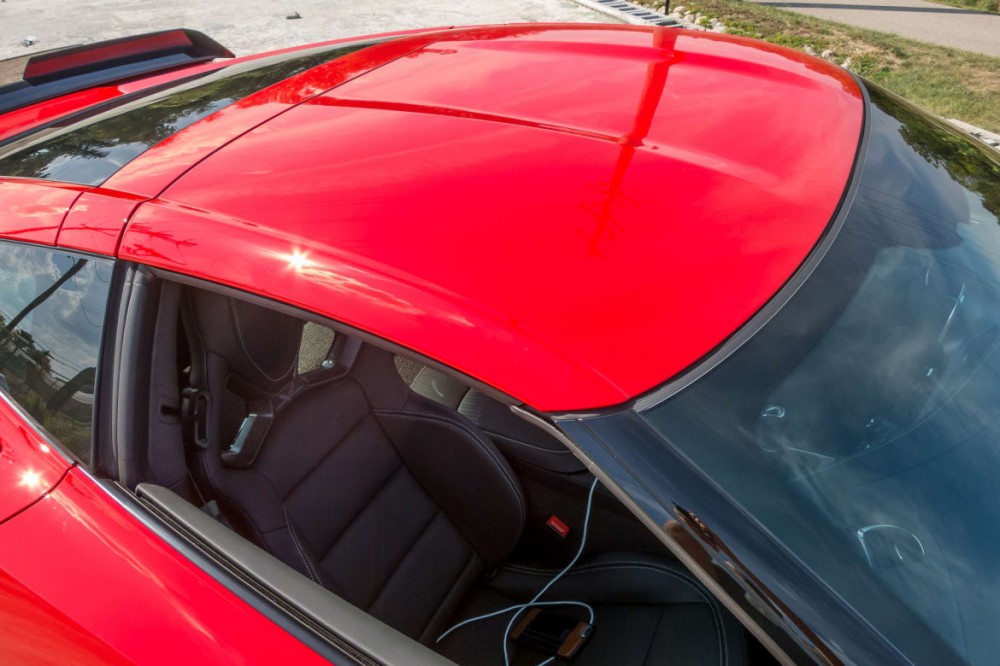
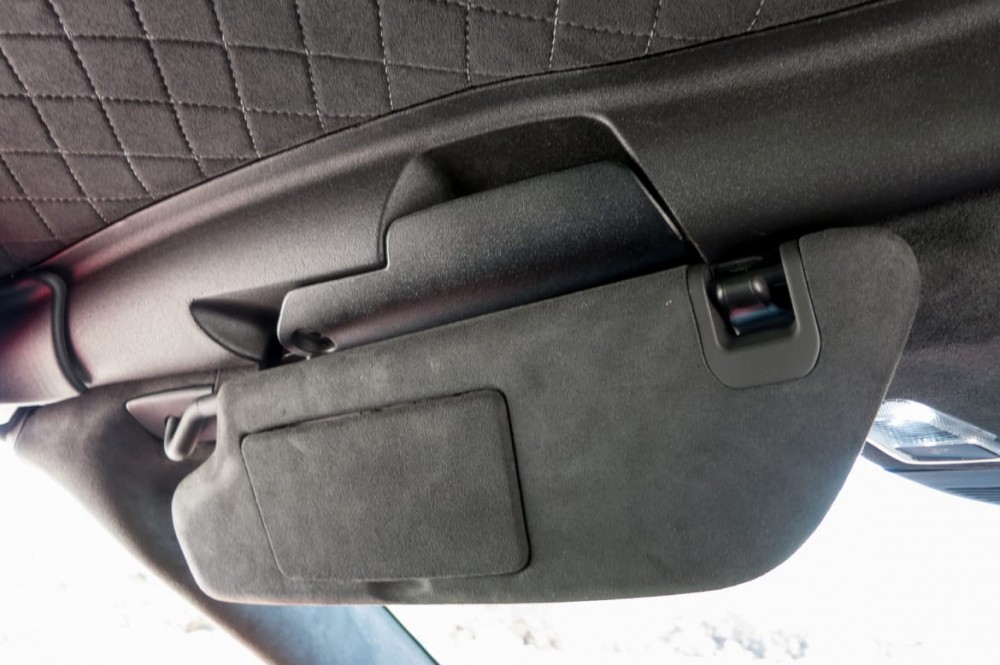
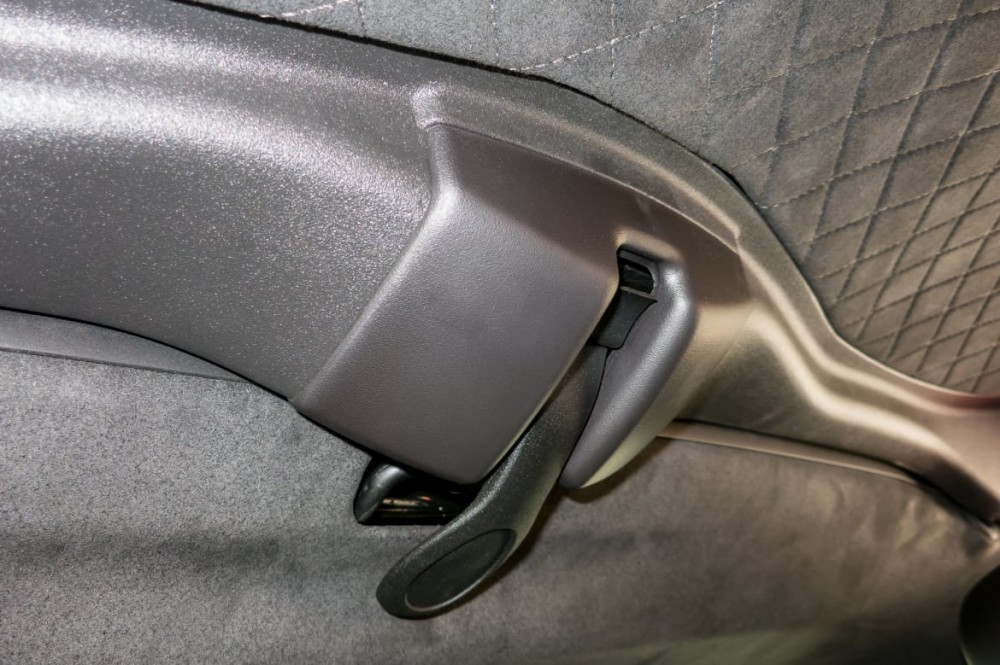
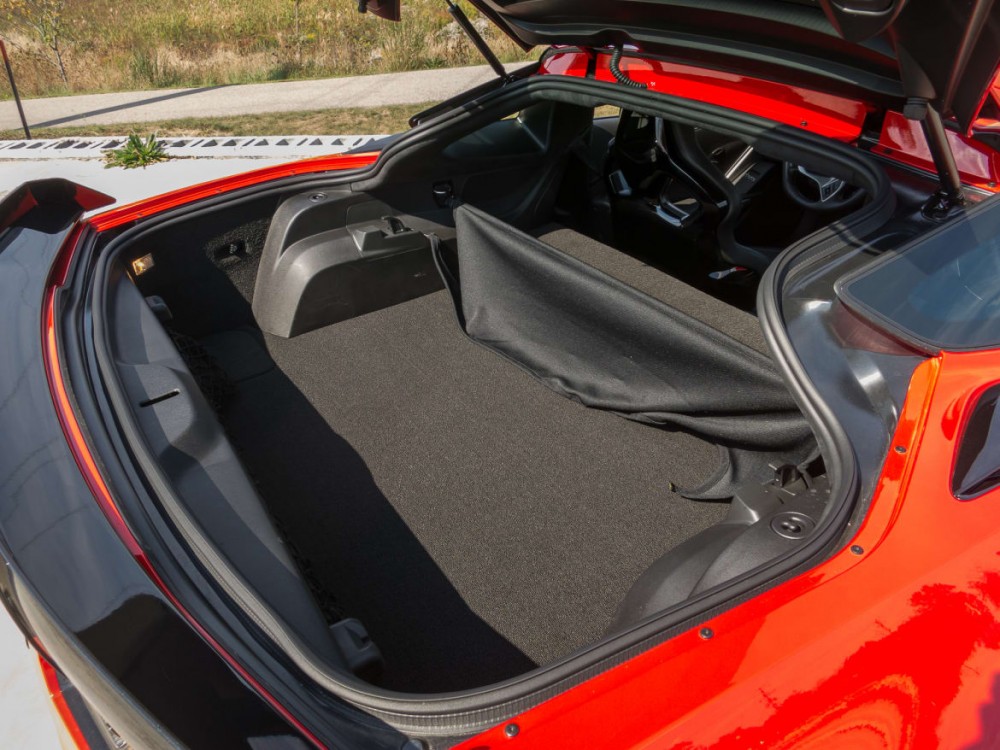

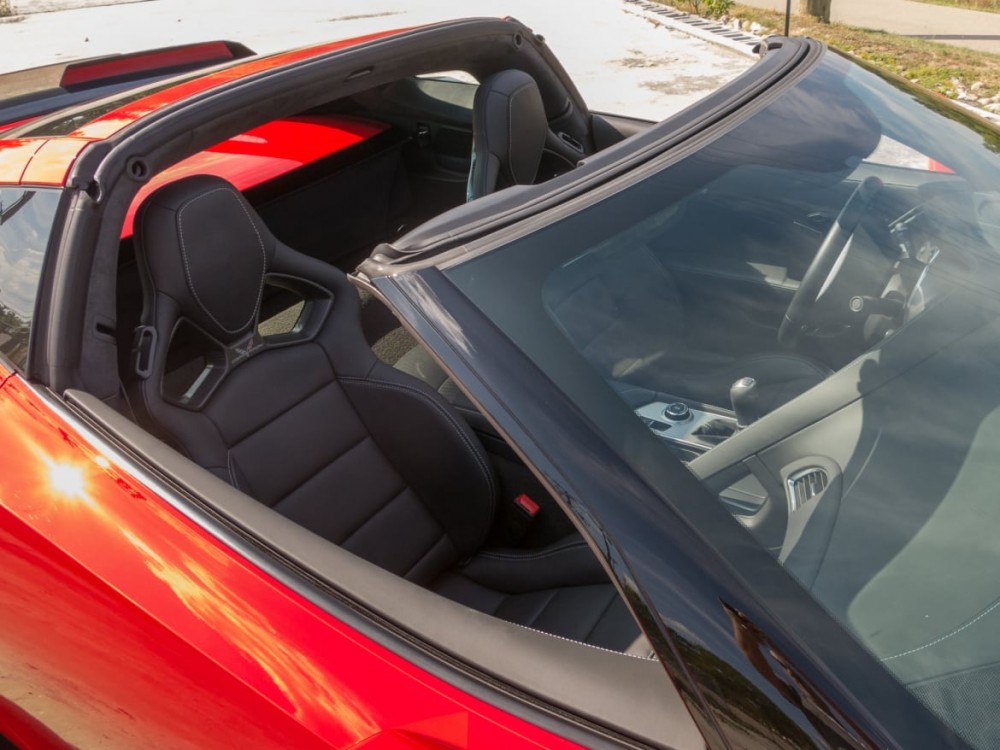
Still a Runner Underneath
Powering the Z06 isn't the Corvette's standard 455-horsepower, 6.2-liter V-8, but rather a supercharged version that puts out a whopping 650 hp and 650 pounds-feet of torque. It's mated to either a seven-speed manual transmission or an eight-speed automatic, even in the Z06. Power goes to the rear wheels.
My test car had the seven-speed manual, which features a rev-matching feature that I found to be unusual at first, then indispensable the more familiar I became with the car. My only issue with the transmission is that it has so many speeds, it can be a little confusing in daily use. With five forward shift gates (Reverse is also up and to the left), it's easy to struggle to find 5th versus 7th, 6th versus 4th on a downshift. Every now and then you'll find you've accidentally selected the wrong gear, though the gear display on the gauge cluster or in the head-up display does help.

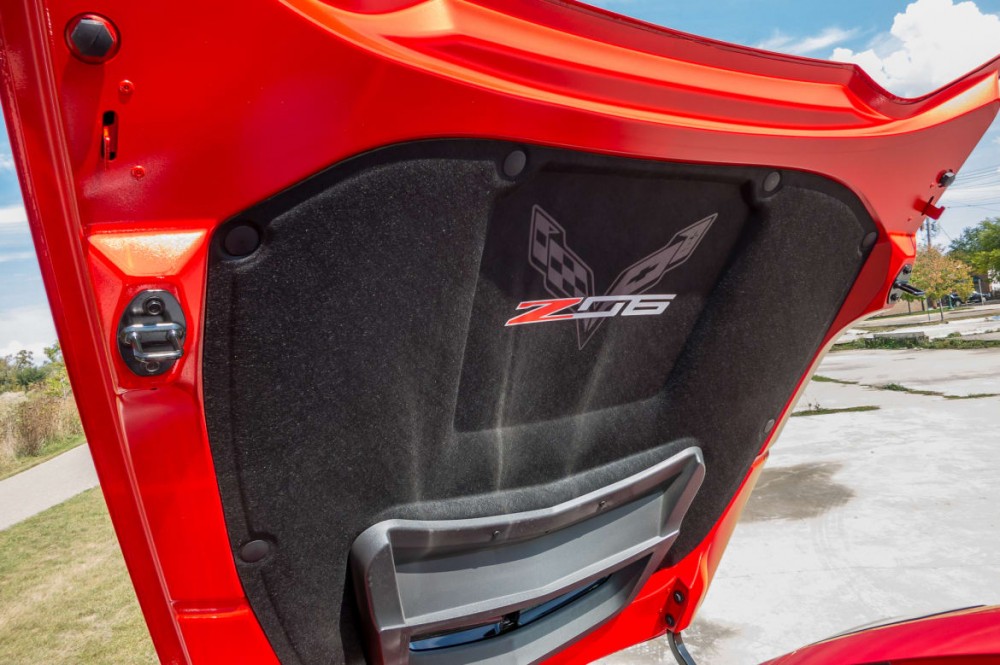
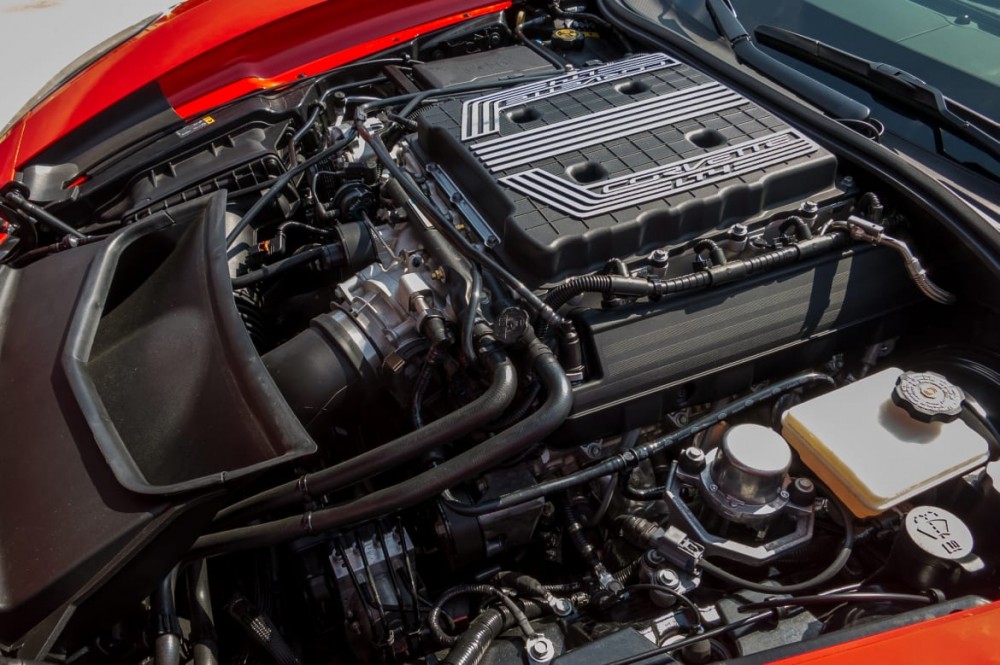
Acceleration from the supercharged engine is nothing short of brutal. The clutch take-up is smooth, shifter action is direct, and the thrust that accompanies the bellowing noise out back is fantastic. The Z06 features several drive modes that can be customized; they're selectable via a rotary knob on the center console.
With five forward shift gates (Reverse is also up and to the left), it’s easy to struggle to find 5th versus 7th or 6th versus 4th on a downshift.
Keep it in Comfort and the Vette trundles around town as happy as a Cruze, providing easy power-assisted steering, a quiet engine note and a reasonably compliant ride (though it still sits on super-low-profile Michelin Pilot Super Sport summer tires on 19-inch front and 20-inch rear wheels). Pop it into Sport mode and everything gets a notch sportier indeed: The engine gets louder, the throttle gets more responsive, steering effort increases and the ride stiffens up a bit.
Track mode gets serious, making everything more aggressive and shutting off stability control — not a good idea for anyone driving one of these things on the street. There's also an Eco mode available for trying to wring every last mpg out of a gallon of premium, plus an inclement weather mode in case you get caught in a serious rainstorm. I largely kept things in Sport mode but adjusted the exhaust independently to the Track setting, which opens up the pipes and releases all the aural fury of that amazing V-8.
I do wish I'd been able to get some track time in the Z06, as this thing is made for the road circuit. I stretched its legs a bit on some less-traveled back roads, but all that did was leave me wanting more. The control the Corvette Z06 provides, the rewarding feedback from a chassis tuned damn-near perfectly for aggressive, sporty driving, the sonorous engine with endless, effortless power — this is one of the best super sports cars in the world. It could easily go head to head with anything Italian or Japanese and roundly embarrass cars costing tens or even hundreds of thousands of dollars more.
It even gets fairly decent gas mileage. The Z06 is EPA-rated at 15/22/18 mpg city/highway/combined with the manual, and my test netted an average of 21 mpg for the week. That's surprising given I was not gentle with the accelerator pedal, nor did I attempt any hypermiling on the highway. I never even stuck it in Eco mode to try to get the V-8's cylinder deactivation to kick in.
Still a Chevy on the Inside
At the Corvette's base price of around $60,000, its interior is acceptable. When you load up a Z06 to almost twice that cost, however, the interior falls short of what you'd get in competing sports cars. Never mind the pointy corner of the gauge cluster that can spear your left knee when you get in; you'll find a way to avoid that. But the quality of the plastic, the sophistication of the controls, the multimedia system screens and gauges — they all scream "Chevrolet parts bin." And while that parts bin is significantly better than it's been at nearly any other point in Chevy's history, you're still sharing your multimedia screen with the Chevy Cruze — not an issue you'd face if you chose a new Mercedes-AMG GT coupe instead.
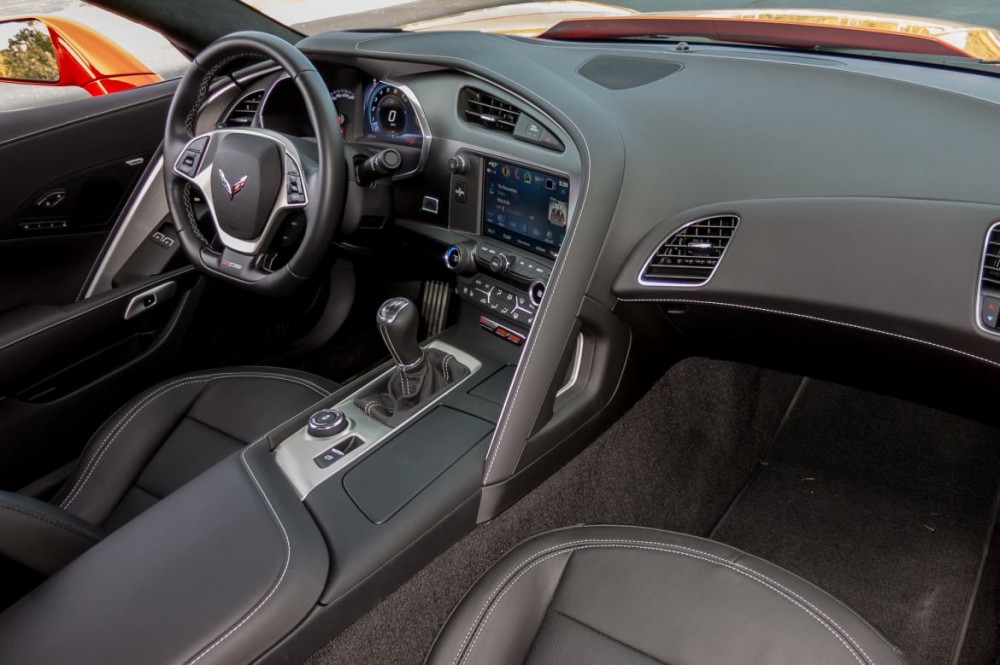

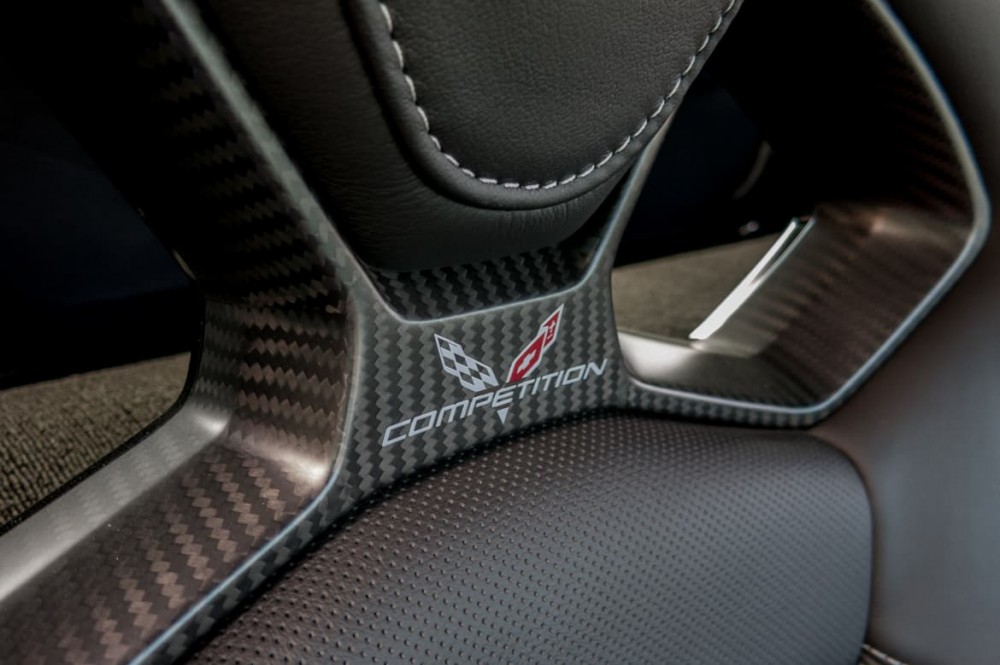
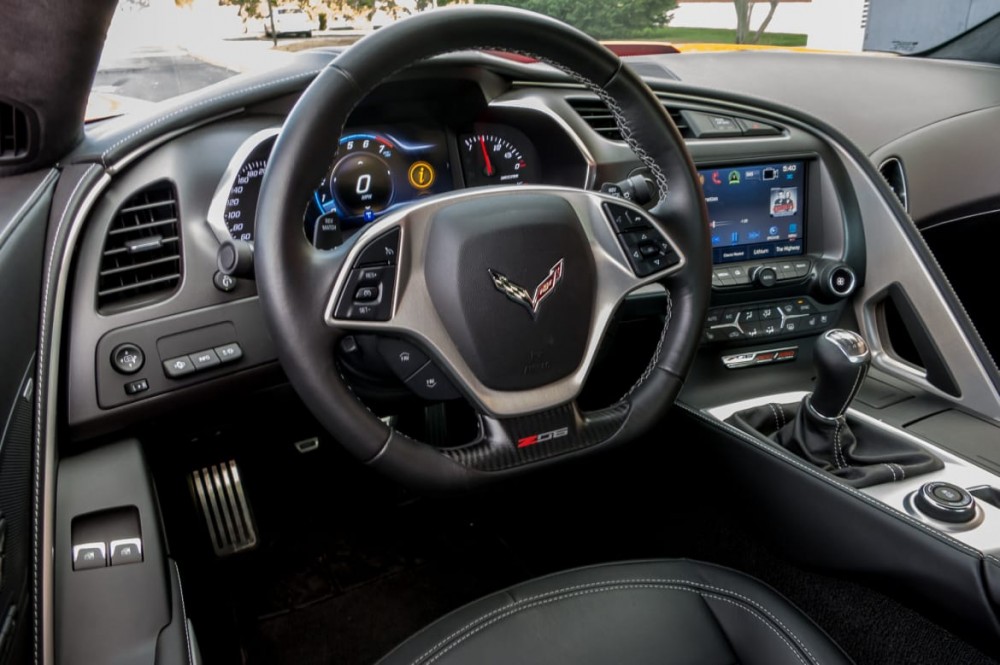
That isn't to say the interior isn't comfortable, well-made and attractive. It's all of those things — it's also just not at the level of luxury-brand vehicles at similar prices. If that's not a factor for you — if abilities, comfort and value trump posh surroundings and the latest gee-whiz graphical displays — you're likely be perfectly pleased with the Corvette's cabin. Badge snobs, however, need not apply.
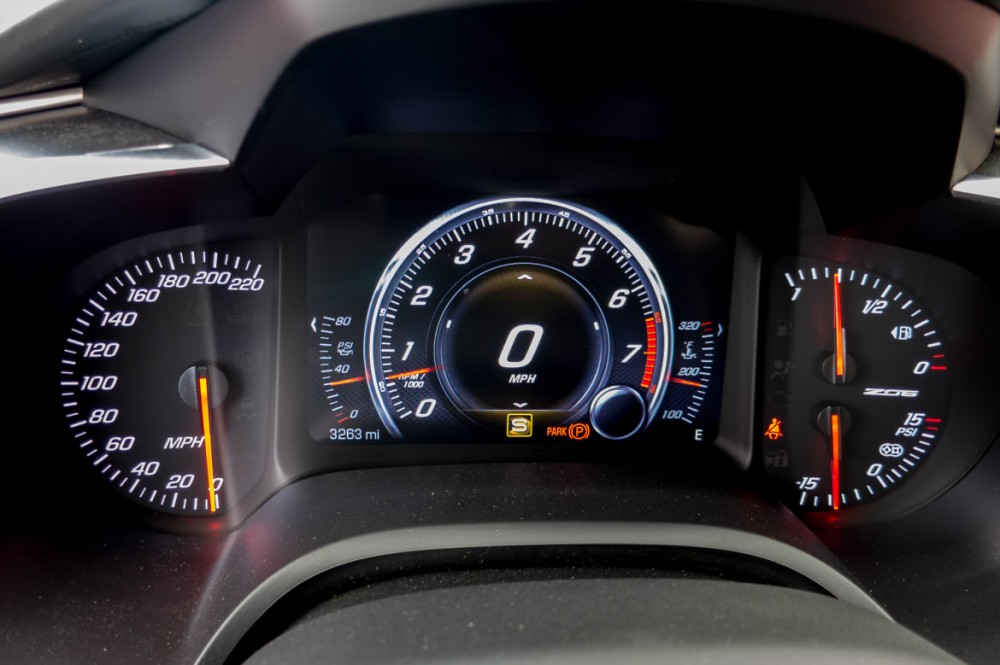
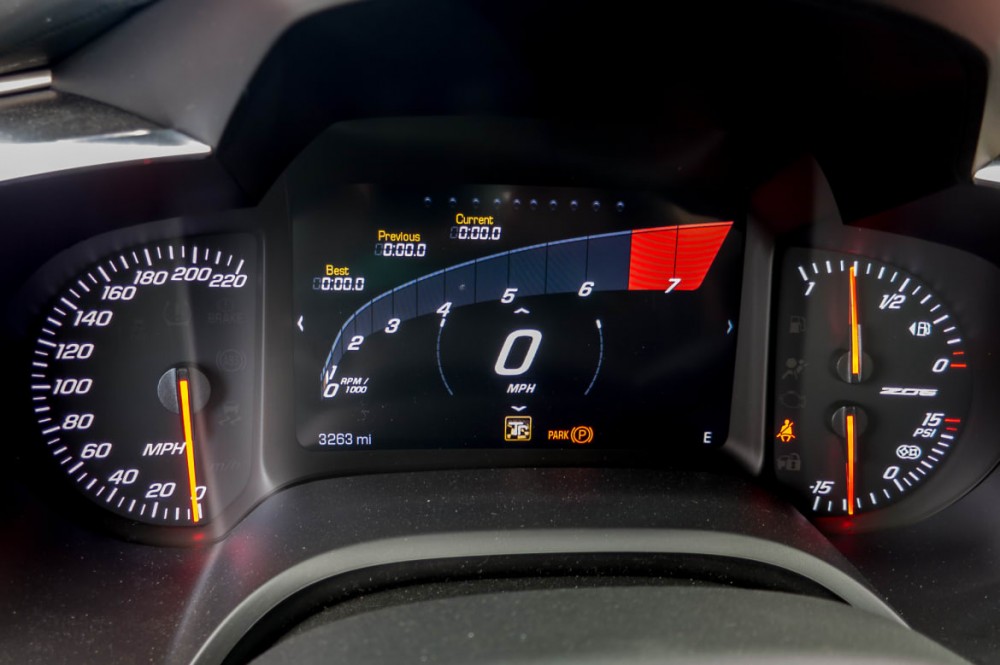

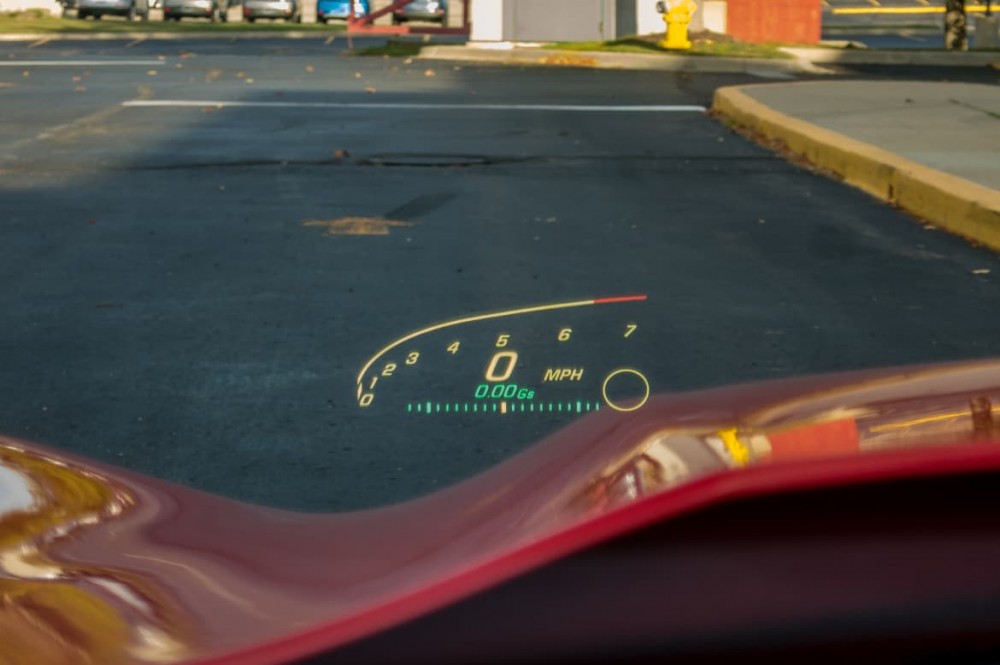
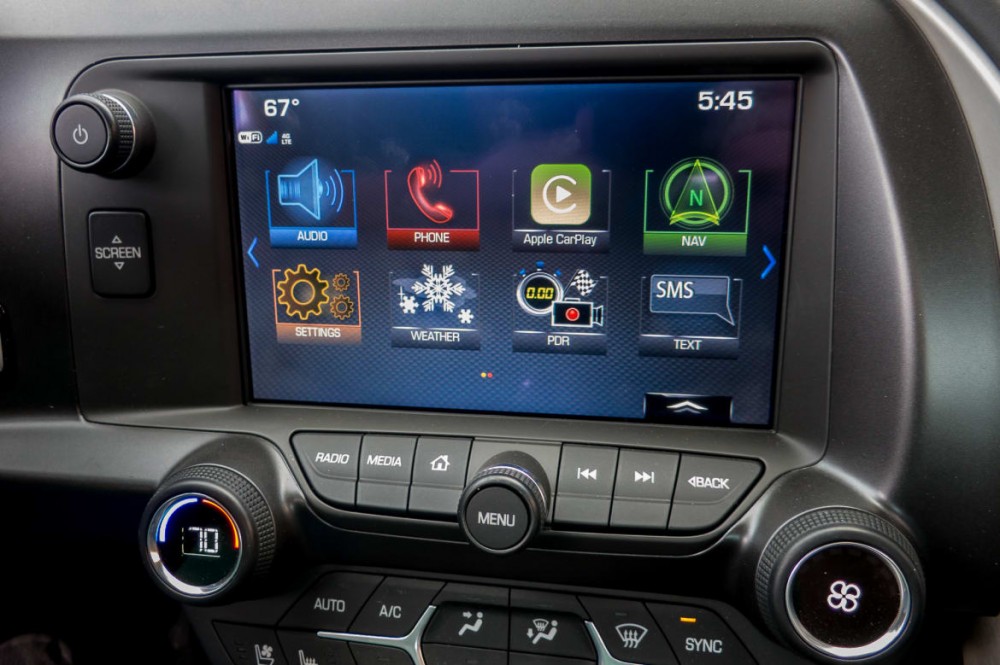
There's plenty of cargo room — for a sports car. You can fit a few soft-sided duffel bags under the glass liftgate, or even a larger roll-aboard suitcase or two. Slide the removable roof panel into its locking storage location, however, and you cut that cargo room in half, meaning only low, flat parcels will fit. But compared with cars like the aforementioned AMG GT or Porsche 911, the Corvette practically feels like an SUV.
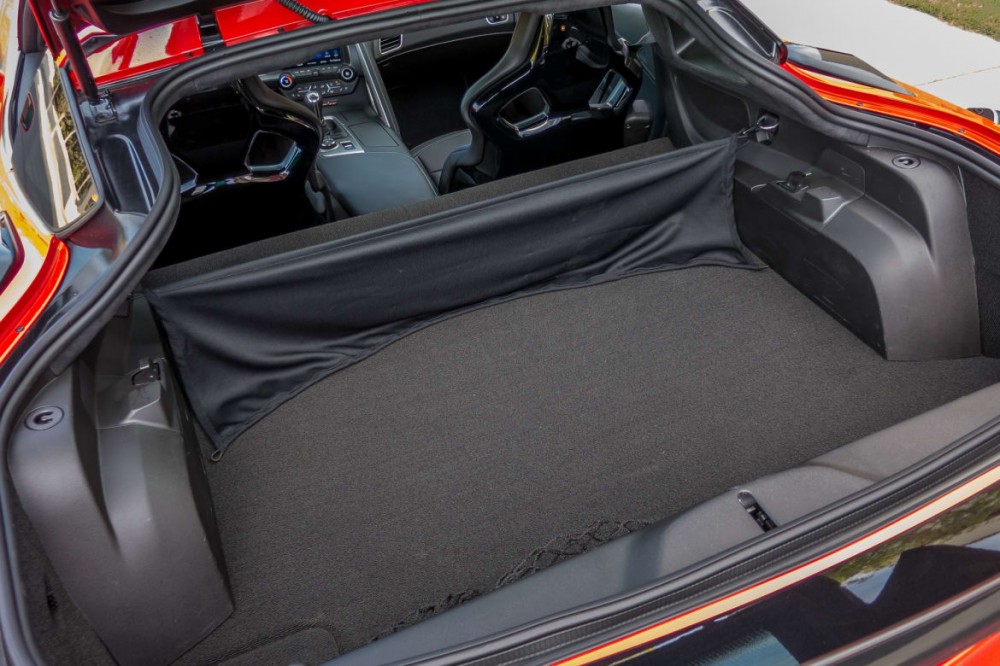
Maybe Not as Safe as It Could Be
Being a fairly low-volume supercar, the Corvette has not been crash-tested by the Insurance Institute for Highway Safety or the National Highway Traffic Safety Administration. Neither have most of its competitors.
The current Corvette was developed before we saw a lot of the latest autonomous vehicle technologies incorporated into new vehicles, so it lacks a lot of systems we've come to take for granted. It has cameras all around, including some to see what you're backing into, plus some optional ones in the front bumper to see that parking stanchion you might bump with your super-low front air dam. There's even an optional camera to record video on the track, overlaid with telemetry data, in the performance data recorder. But there's no blind spot warning, forward collision warning, lane departure warning, autonomous braking or distance-keeping cruise control available.
For the Money, Can't Touch This
The base Chevrolet Corvette starts at a very reasonable $56,490 (including destination) but quickly climbs as you add options. The fire-breathing Z06 coupe starts at a loftier $80,480 and can easily hit six digits when you add packages like the 3LZ premium equipment group (memory seats, luggage shade, auto-dimming mirror, custom leather interior), the Z07 Performance Package (Brembo ceramic brakes, Michelin Pilot Sport Cup summer tires, Z07 sport suspension), the visible carbon ground effects package, competition sport seats and more. That brought the total for my coupe to $104,914 — luxury coupe territory, indeed.
Luxury sports coupes like the Jaguar F-Type R, Mercedes-Benz AMG GT and Porsche 911 Carrera all compete with the Corvette when it gets to this price level. They can match it for amenities, but they have a hard time keeping up with it on a track, where the Vette's abilities are easily a match for cars twice its price. Any of these cars will have a nicer interior than the Corvette, with multimedia systems that feel more sophisticated and better thought-out. Compare all four here. But if you're not a badge snob and the name on the hood isn't as important to you as the car's style, ability and sheer presence, the Corvette is hard to beat — on the street or the track.








